The Adventures of AntarcticaSean Part Two: Arrival
Continuing from Part One: “Anticipation”
Wednesday
Flight FA070S is scheduled for 7am, check-in no later than 5.30am. The night before, I’m feeling tired after a long and fulfilling day, but it’s hard to sleep. Thankfully a text comes telling me that the flight’s been delayed an hour, so I get to lie in a little longer. That’s good news, but also a little worrying.
Delays mean weather, and Weather could lead to the cancellation of the flight. The plane is an Airbus A319, modified for government use. It lands at Wilkins aerodrome on a runway scraped across blue ice. I’ve heard stories of flights cancelled at the very last moment: after flying all the way to Antarctica, those unlucky voyagers had to turn all the way back to Hobart, there to hope for better weather the next day, or the day after.
No more texts come that night or in the morning as I pack my gear. I’ve brought clothes to wear in the station, the aforementioned super duper camera (a Canon 80D, for the record, with two lenses), plus a laptop. In Kingston they gave me an emergency pack stuffed with the cold-weather gear to put on before we land. I have four books packed to donate to the station. That makes two bags to check in, and three bags carry-on. I feel like Zsa Zsa Gabor. All I need is a poodle to complete the look. Snow white, of course.
The friend I’m staying with very kindly drives me to the airport. There I meet more fellow expeditioners, ten or so. They include scientists (Zoë, Aki), defence force employees (Steve, John, Glenn), a future station leader (Rebecca), and others flying to the station on AAD business (Adrian, Simon, Richard). I’m shy at first. A lot of people think I’m very outgoing, and maybe I can be in familiar environments, but I’m out of my depth here. This is another of my concerns: how will get on in a place where I know no one at all and there are few places to hide? Can I fake a sunny disposition long enough to get the information I need?
Fortunately, everyone’s friendly, generous, and fascinating–traits that constantly appear over the coming week. The AAD knows their stuff when it comes to picking the right people. People with the right stuff. Again, I’m reminded of the space program.
We check in and are bused to a tiny building, where we hand over our passports. No stamp, which is slightly disappointing. More on that later. From there to the plane, where we are told the flight’s been delayed another hour. Eek.
I have no memories of the wait. Luckily, I didn’t know about the heavy snow falling on Casey that very moment, otherwise I would have fretted considerably more than I probably did, although this is an important lesson in the variability of Antarctic weather. When we do eventually land, the skies are an innocent, summery blue, and the sun is shining brightly. Snow? What snow?
We take off. I don’t remember that either. My memories are all about the people I’m travelling with. They’re fascinating, and I’m already learning heaps. By the time we’re halfway there, we’ve formed a little group that I’m guessing will see us through our stay on the ground. And I’m right.
It feels very strange to be flying south from Hobart. The sky below the plane is cloudy: no pack ice for us. Not until we start to descend, having first donned our heavy clothes, do we catch our first glimpse of Antarctica. I don’t even realise I’ve done it, at first: white cloud and white snow are hard to tell apart from on high. When I finally sort it out, suddenly it’s like flying over an alien landscape. Europa, maybe, except the sky is blue. Yet again I am revisiting the fantasies of my youth, wherein I am an interstellar explorer. I feel tingly with excitement.
We touch down very smoothly. There’s nothing to distinguish this landing from any other I’ve experienced. No awareness that the plane is now resting on ice that could be hundreds of metres thick.
The rear door opens. We stand and gather up our things. I’ve taken my prescription specs off and replaced them with polarising sunglasses, so everything is blurry and an odd colour. My cold-weather gear is making me sweat–or is that nerves? I’m juggling my bags, feeling clumsy and foolish. People start moving towards the door. I remind myself to breathe.
As I step out of the plane, I’m confronted by cameras. Someone’s documenting our arrival. The light is very bright and the air is bitingly fresh and flavourless. I stumble but manage to catch myself before tumbling down the stairs. Ahead of me is the cluster of small buildings that comprise Wilkins aerodrome. I make my clumsy way down onto the ground.
Except it’s not ground. It’s snow, and below that, ice. I can hear my boots crunching and squeaking underfoot as I follow the others to where we’ve been told to wait. I slip a couple of times. My feet are sweating. I’m sweating all over. I can hear myself breathing too quickly now. My adrenaline can’t make up its mind.
The aerodrome is just a temporary stop. Casey station lies several hours away. We gather, fellow travellers, and wait to find out which vehicle we’ll be travelling in. There’s a Hägglund tracked vehicle waiting for us, next to a bizarre looking bus (“Priscilla”). I’ll be on the bus. While I wait, I swap sunglass for specs and suddenly I can see. The view is blindingly beautiful.
We load up and set off. Priscilla moves roughly and noisily across the snow, yet there’s a soothing quality to this mode of transport that takes all of us by surprise. We nod off at various points in our journey, although that seems incredible to us later. We’re in Antarctica at last, and all we can do is sleep?
The landscape itself is conducive to rest, though. Snow and ice stretch in a flat plane all the way to the horizon. Once the aerodrome falls behind us, there’s nothing to see except the faint lines of previous vehicles ahead and the occasional pole to mark the road (tipped with cans so they’ll be visible to radar during whiteouts). You can downoad a video of the experience here. It’s easy to let the eyes skid and wander, and drift shut.
We stop at the line denoting the Antarctic Circle. We’re actually heading outside that line, since Casey lies just north of 66˚S. This is our first photo op in Antarctica, and we all make the most of it.
Lulled into a false sense of security by my overheating on landing and the warmth inside the Hagg, I leave my gloves and hat in Priscilla. It’s windier here than at the aerodrome and I am instantly chilled to the bone. But thrilled at the same time. Short of losing a finger or the tip of my nose to frostbite, this is exactly what I came here to experience. Real cold! Brilliant!
The rest of the drive is a sleepy blur. When I wake, I chat with our driver (Patrick) and Richard, who knows the station well. I’m already soaking up information and coming up with ideas. During the drive, I’m struck by certain similarities between what I’m seeing and the landscapes I know back home. For an instant, I’m disappointed: have I come all this way just to see the outback sprayed white? But of course that’s just me being observationally lazy: the surface of the snow is only superficially similar to a sandy desert. Surface water melts and freezes in smooth patches, warmed by the summer sun, and elsewhere drifts of snow are whipped up into odd little spirals, like statues. Still, the thought triggers another thought, this time about Casey being an outpost (something I wrote about for AAD here), and that sets my creative instincts down an entirely new path . . . I’ll talk more about that in another installment.
The drive is long, but it’s exactly what I needed to get my head around the reality of the experience. It’s not a dream. I’m really here. It could have been overwhelming if Casey had been just a hop away. By the time we stop a second time to look out over Bailey Peninsula and Vincennes Bay, catching our first glimpse of icebergs (icebergs!), we’re ready to roll down the hill to the cluster of brightly coloured buildings below, our home for the next few days.
The current incarnation of Casey research station was built in the 1980s and has been expanded and modified in various ways since. The original Eighties aesthetic is evident in the Red Shed, a building that is certainly one of the largest in Antarctica, if not the largest. It contains kitchens, common areas, and accommodation, and we’re met there by station leader Paul Ross and deputy Brendan Hopkins, who will shortly give us an induction. First, we find our rooms (mine is 236) and bathrooms (23), and dump our gear. I’ve been shedding layers ever since we arrived. Inside the Red Shed it’s a comfortable 19˚C, so I spend most of the coming days in t-shirts or long-sleeve thermals–even outside, sometimes.
My room is in a block of four on the upper level, tucked right into a corner of the “West Wing”. This relatively new section is fashioned from shipping containers, into which have been squeezed accommodation for the expeditioners. The rooms are cosy; I feel like I’m in a ship, a feeling reinforced by the rectangular proportions of the Red Shed itself. There’s a bed hemmed in by walls on three sides, a desk and chair, and lots of nooks and crannies for my stuff. No window, which suits me just fine: the long days of summer were something else I was nervous about, being a light sleeper.
At the induction, we’re officially welcomed to the station and shown a PowerPoint outlining where everything is and what we’re allowed to do. There are a lot of out-of-bounds areas, understandably: Casey is a place of constant activity, from construction to scientific studies, and there’s a lot of infrastructure that wouldn’t benefit from a bunch of heavy boots stomping all over them. There are procedures to follow if we wander any distance, such as turning tags like they do in underground mines and carrying radios. Water comes from a melt lake behind the Red Shed and is in short supply during summer, so showers are limited to one a day, no longer than three minutes.
A large part of the induction focuses on doors, specifically the opening and closing thereof. With so many people (84 during my stay) crammed into a relatively small space, and many of them working shifts, noise is a constant issue. The slamming of doors is the number one cause of friction in the community. And there are fire doors everywhere. Between my bedroom and the Wallow, the main communal area, there are six.
Over and over, this lesson is reinforced. I swear not to disturb anyone while moving back and forth (and sincerely hope I did not).
Then it’s to dinner, which happens every day at 6pm. Lunch is at 1pm, and before that there’s a cooked meal at 10.30am called “Smoko” to refuel the tradies, most of whom have been up since 6.30am. (Working in the cold really takes it out of you.) Breakfast is up to individual expeditioners, but there’s loaves of fresh bread available for toast (fresh eggs are not often available). The food at Casey is terrific. There are three professional chefs on station during the summer, catering to all conceivable dietary needs. My first meal in Antarctica is roast vegetables and gravy, followed by chocolate pudding (containing cashews, a nice touch). Someone’s having a birthday, so there’s cake for all to share. Maybe it’s because I’ve hardly eaten all day, maybe it’s because the lack of odour outside (no plant life, no animals) makes every smell inside that much intense, or maybe it’s just plain delicious. Whichever way, I eat half my body weight in food, a trend which continues unchecked.
As I eat, I’m struck by the openness and helpfulness of everyone we encounter. Even though we new arrivals are still sticking to our little cohort, we’ve been welcomed by many people and it seems like no question is too hard to answer. Clint Chillcott, Communications Technical Officer, offers to help us connect our phones to the local network, and stays for over an hour to guide us through the kitchen as well. The purple ribbons on my boots draws the attention of Project Officer Adrian Young, who offers me some Doctor Who ones to add to the spectacle. This kind of experience is repeated over and over. No one is too busy to take time out to help the newcomers settle in.
The communal atmosphere extends to the upkeep of the station. Everyone chips in with cleaning up dishes and washing them after meals. Every day, two people are signed up for “slushy” duty, eleven hours of helping out in the kitchen and cleaning the common areas. Once a week, everyone helps clean the rest of the Red Shed. No one is exempt, even the station leaders. I put up my hand for slushy duty, wanting to experience everything.
But not tonight. I’m shattered. The day has been long and my mind is overflowing with new experiences and ideas. My original plan (semi-seriously) was to sleep only when the sun set, which is around midnight that time of year. By 9pm, I’m done in, taking one last look out the front door of the Red Shed before I retire. Ice. Snow. Bergs. It seems incredible to me that I’m witnessing these things with my very own eyes. Photographs don’t do it justice. Without trees for reference, there’s no way to tell how far away anything is. I could be looking at something halfway across the bay, or halfway to infinity.
Before bed, I check the library (hey, I’m a writer) and am pleased to find many familiar titles on the shelves. Previous expeditioners brought their favourite authors with them (Dickens, Wells, Lovecraft) to while away the long winter nights. Some of my friends are represented at Casey (Trudi Canavan, Ian Irvine, Kylie Chan), which is exciting.
Then I call home, which is an amazing technological feat. One century ago, mail could take years to pass between loved ones, and here I am talking to my wife in real time. I can text, too. Email isn’t working yet, but that seems a small problem. My wife is so far away, but seems so very close. Something Douglas and Paquita would have appreciated.
In my room, I take notes before hitting the sack. The air is dry. It’s very quiet, apart from the low hiss of air-conditioning and a distant grumble of generators. I feel completely at ease, but am reminded of something Alan Dean Foster said in The Thing: that this is a dangerous environment in which few creatures survive all year round. Humanity only manages it by carrying everything that sustains us on our backs, like diving spiders. If the power fails, say, a chilly future awaits us. Sleep tight.
This is my first night in Antarctica.
Tomorrow, I tell myself, I will go exploring.
Continued in Part Three: “Adventure”
THANKS TO: Paul, Brendan, Patrick, Richard, Steve, John, Zoë, Glenn, Jordan, Andrew, Dom, Adrian, Clint . . . everyone whose path I crossed that first day. Apologies if I’ve forgotten to mention you!
More photos here, of the trip to Casey and more.
For other blog posts about Antarctica, click here.


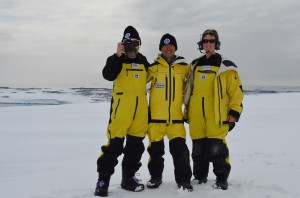
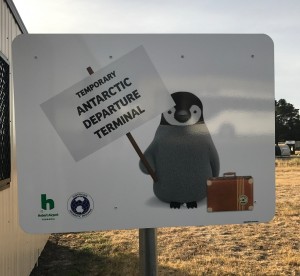
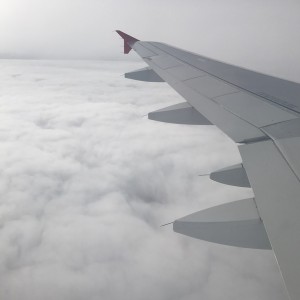
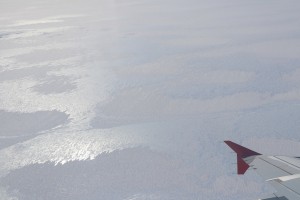
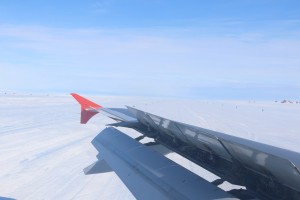
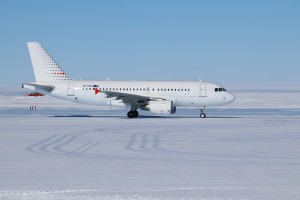
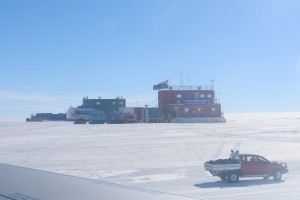
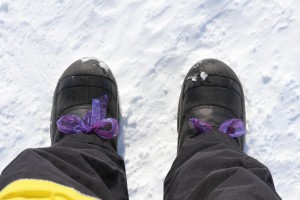
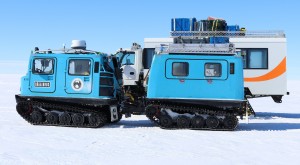
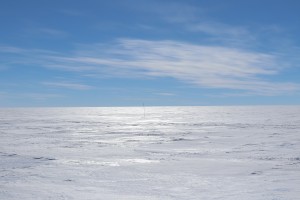

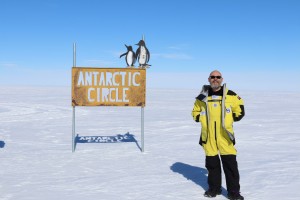

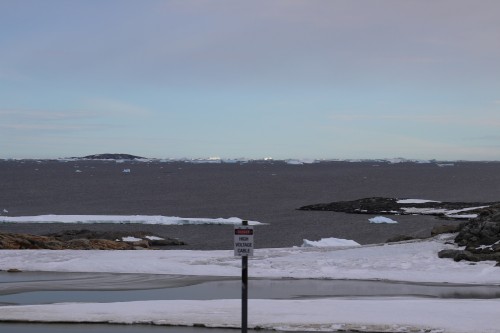
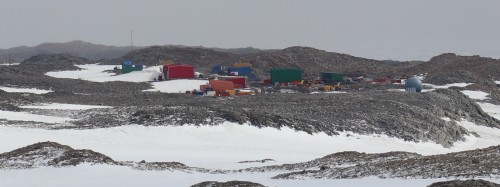
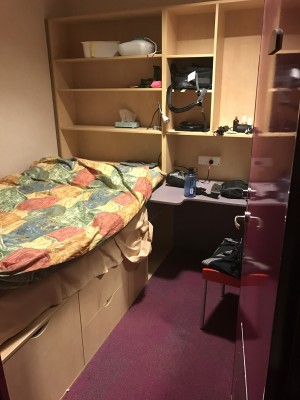



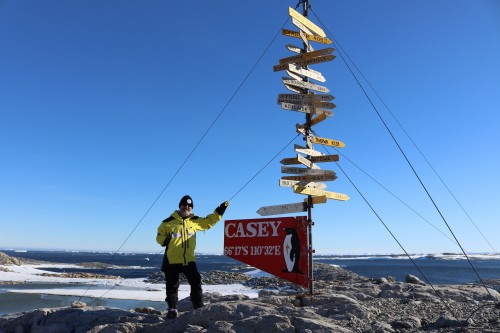
what an amazing introduction: so many different points of reference all coming down to the vast seeming emptiness of the great southern land!
I’m really glad you’re enjoying it so far. The really good stuff is yet to come!